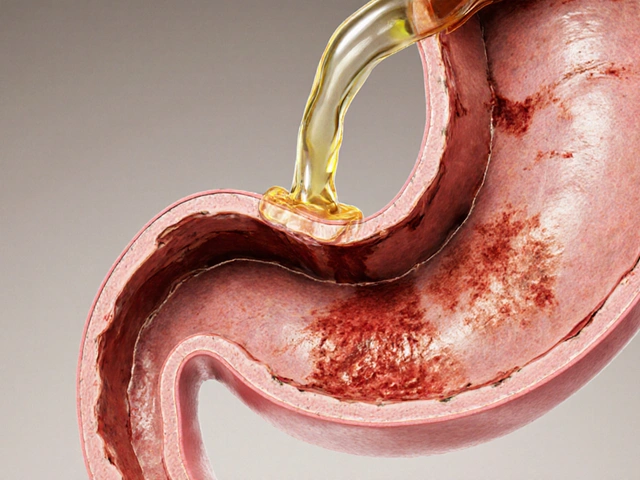Quit Smoking Product Selector
Nicotex is a pharmaceutical nicotine replacement product sold in Australia that comes as a 2mg or 4mg oral lozenge. It delivers nicotine through the buccal mucosa, easing cravings while you taper off cigarettes.
Quick Takeaways
- Fastest onset: Nicotex lozenges kick in within 5‑10minutes.
- Lowest cost per mg in Australia, but texture can be off‑putting for some.
- Vaping offers rapid relief but brings inhalation risks.
- Nicotine patches provide steady levels but are slower to curb sudden urges.
- Prescription meds (bupropion, varenicline) work on brain pathways, not nicotine delivery.
Why Compare Nicotex with Other Options?
Anyone trying to quit smoking faces a decision tree: stick with a lozenge, switch to a patch, vape, or go pharmaceutical. The right choice depends on how quickly you need nicotine, how you tolerate oral products, and whether you prefer a prescription‑only route.
Below we walk through the most common alternatives, each introduced with its own micro‑data block so search engines can surface the facts directly.
Nicotine Gum
Nicotine gum is a chewable, nicotine‑infused gum (usually 2mg or 4mg) that releases nicotine when you chew and park between your cheek and gum. It mimics the oral fixation of smoking while giving a steady nicotine drip.
Key differences from Nicotex:
- Chewing action can replace the hand‑to‑mouth habit better than a lozenge.
- Onset is slightly slower (about 10‑15minutes) because nicotine must be absorbed through the oral mucosa while chewing.
- Some users report a bitter taste, which can be a barrier.
Nicotine Patch
Nicotine patch is a transdermal adhesive that releases a fixed amount of nicotine over 16‑24hours. The patch is designed for steady, background nicotine levels.
Advantages over Nicotex:
- No oral contact - good for people who dislike lozenges or gum.
- Provides around‑the‑clock coverage, which can blunt early‑morning cravings.
- Onset is the slowest (hours), so it can’t stop a sudden urge.
Vaping (E‑cigarettes)
Vaping is a device‑based inhalation method that aerosolises a nicotine‑containing liquid (e‑liquid) for rapid absorption through the lungs. Vaping mimics the inhalation ritual of smoking.
When you compare vaping to Nicotex:
- Onset is almost immediate-within seconds, similar to a cigarette.
- Nicotine concentration in e‑liquids can be much higher (up to 50mg/mL), making dose control trickier.
- Long‑term lung safety remains under study; many health agencies flag potential respiratory irritation.
Prescription Medicines
Two major prescription‑only aids work without delivering nicotine at all.
Bupropion is an atypical antidepressant that also reduces nicotine cravings by acting on dopamine and norepinephrine pathways. It comes as a tablet taken daily.
Varenicline is a partial nicotine‑receptor agonist that blocks nicotine’s rewarding effects while easing withdrawal.. It is usually prescribed for a 12‑week course.
Both are more expensive than over‑the‑counter (OTC) Nicotex, require a doctor’s script, and can have side‑effects such as vivid dreams (varenicline) or insomnia (bupropion). Their advantage is that they target brain chemistry directly, often producing higher quit rates in clinical trials.

How Do These Options Stack Up?
| Product | Form | Typical Dose (mg) | Onset | Duration | Prescription? | Average Cost (AU$) per mg |
|---|---|---|---|---|---|---|
| Nicotex | Lozenge | 2-4 | 5‑10min | 30‑45min | No | 0.30-0.45 |
| Nicotine gum | Chewable gum | 2-4 | 10‑15min | 30‑60min | No | 0.35-0.50 |
| Nicotine patch | Transdermal patch | 7‑21 (total per day) | Hours | 16‑24h | No | 0.25-0.40 |
| Vaping | E‑cigarette | Variable (10‑50mg/mL) | Seconds | Immediate | No | 0.40-0.80 |
| Bupropion | Tablet | 150mg per day | Days (steady state) | 24h | Yes | 0.70-1.20 |
| Varenicline | Tablet | 1mg twice daily | Days (steady state) | 24h | Yes | 0.90-1.40 |
Choosing the Right Tool for Your Quit Journey
Think of quitting as a three‑stage marathon: early cravings, mid‑point plateau, and final taper. Different products shine at different stages.
- Early cravings (first week): You need fast nicotine. Nicotex lozenges or vaping deliver the quickest relief. If you dislike the feel of a lozenge, a low‑dose vape can be a bridge.
- Mid‑point plateau (weeks 2‑4): Your body starts adjusting. Transition to nicotine gum or a lower‑strength patch to smooth the decline.
- Final taper (weeks 5+): Goal is to wean off nicotine completely. A 7mg patch or prescription medication can help keep cravings at bay while you focus on behavioral strategies.
Clinical guidelines from the Australian Therapeutic Goods Administration (TGA) recommend combining a fast‑acting product (lozenge, gum or vape) with a long‑acting one (patch) for the best odds of success.
Side‑Effects, Safety, and Regulatory Notes
All nicotine products carry a risk of side‑effects, mainly nausea, throat irritation, and increased heart rate. The severity usually scales with dose.
Regulatory differences matter. Nicotex, gum, and patches are listed on the Australian Register of Therapeutic Goods (ARTG) as OTC medicines, meaning they meet strict safety standards. Vaping devices are regulated by the TGA as low‑risk products, but recent Australian policy requires a prescription for nicotine‑filled e‑liquids, making illegal sales a concern.
Prescription drugs (bupropion, varenicline) undergo full pharmaceutical approval, so they have detailed safety profiles. Common adverse events include insomnia (bupropion) and vivid dreams (varenicline). Always discuss with a doctor before starting.
Real‑World Examples
Case 1 - Sarah, 32, Melbourne: She tried Nicotex lozenges during her first quit attempt but found the minty taste unbearable. Switching to nicotine gum gave her the oral feel she missed from cigarettes, and after three weeks she moved to a 7mg patch and stopped using any product after eight weeks.
Case 2 - James, 45, Sydney: Long‑standing heavy smoker who needed rapid relief during stressful work meetings. He started with a 4mg Nicotex lozenge for immediate cravings, then added a 14mg patch for background control. The combination reduced his cigarette count from 20/day to 2/day within a month.
Case 3 - Priya, 28, Perth: Preferred vaping because it mimicked the hand‑to‑mouth habit. She used a 12mg/mL e‑liquid, gradually reducing concentration by 2mg each week. After six weeks she stopped vaping altogether and consulted her GP for a short course of varenicline to handle lingering urges.
Cost‑Effectiveness Snapshot
Budget can be a deciding factor. A typical 20‑lozenge pack of Nicotex costs around AU$8, translating to roughly AU$0.40 per mg. A 3‑month supply of 21mg/day nicotine patches runs about AU$90 (AU$0.30 per mg). Vaping devices have higher upfront costs (AU$80‑$120) plus ongoing e‑liquid purchases, which can add up to AU$100‑$150 per month at steady use.
Prescription medications are covered partially by the Pharmaceutical Benefits Scheme (PBS) for eligible patients, bringing the out‑of‑pocket cost down to around AU$30‑$40 for a full 12‑week course.
Putting It All Together: A Decision Checklist
- Do you need instant relief? Choose Nicotex lozenge or vaping.
- Do you dislike anything that sits in your mouth? Patch may be better.
- Are you comfortable buying a prescription? Consider bupropion or varenicline for higher quit rates.
- Is cost a primary concern? Patches and Nicotex are the cheapest per mg.
- Do you need to address a hand‑to‑mouth habit? Gum or vaping keep that ritual alive.
Next Steps for Readers
1. Assess your smoking pattern - how many cigarettes per day, when cravings hit hardest.
2. Match the pattern to the product profile above.
3. Visit a local pharmacy or GP to discuss dosage and potential side‑effects.
4. Set a quit date and start with the chosen product, tracking cravings in a journal.
5. After two weeks, evaluate whether you need to adjust dosage or add a complementary product (e.g., patch + lozenge).

Frequently Asked Questions
Is Nicotex safe for people with heart conditions?
Nicotex delivers nicotine, which can raise heart rate and blood pressure. If you have hypertension, arrhythmia, or recent heart surgery, you should consult a cardiologist before using any nicotine replacement, including Nicotex.
Can I combine Nicotex with a nicotine patch?
Yes, many quit‑plans pair a long‑acting patch with a fast‑acting lozenge to cover sudden cravings. Start with the lowest‑strength patch (7mg) and use a 2mg Nicotex lozenge only when needed. Keep total daily nicotine below 20mg to avoid overdose.
How does vaping compare to Nicotex in terms of addiction risk?
Both provide nicotine, but vaping also reinforces the inhalation habit, which can make it harder to break the behavioral component of smoking. Nicotex targets only the chemical dependence, so many clinicians view it as a lower‑risk behavioural option.
What are the most common side‑effects of Nicotex?
Mild nausea, throat irritation, hiccups, and a temporary increase in heart rate. Most side‑effects subside after a few days as your body adjusts.
Is there a reason to choose bupropion over Nicotex?
Bupropion works on brain neurotransmitters rather than delivering nicotine, so it can help people who want to avoid any nicotine exposure entirely. It also reduces depressive symptoms that often accompany quitting. However, it requires a prescription and can cause insomnia, so it’s not for everyone.






Todd Peeples
September 25, 2025 AT 00:56In the contemporary landscape of nicotine cessation modalities, the pharmacokinetic profile of Nicotex lozenges warrants meticulous examination 😊. The buccal mucosal absorption pathway facilitates a rapid onset within five to ten minutes, a temporal advantage over transdermal patches whose systemic delivery unfolds over hours. Moreover, the dosage titration schema-available in 2 mg and 4 mg formulations-enables clinicians to calibrate nicotine plasma concentrations in accordance with the smoker’s baseline consumption. From a cost–effectiveness perspective, the AU$0.30‑0.45 per milligram metric positions Nicotex as a competitive contender relative to nicotine gum, whose per‑milligram expense marginally exceeds AU$0.35. The adverse event spectrum remains predominantly mild, encompassing transient nausea, hiccups, and localized throat irritation, thereby aligning with the safety parameters delineated by the Therapeutic Goods Administration. Comparative analyses further elucidate that while vaping delivers nicotine within seconds, the inhalation vector reintroduces pulmonary exposure risks, a factor not negligible in the risk‑benefit calculus. Clinical guidelines endorse a dual‑therapy algorithm-pairing a rapid‑acting agent such as Nicotex with a steady‑state patch-to attenuate both acute cravings and basal withdrawal. Patient adherence trajectories improve when the oral fixation is satisfied, an ergonomic consideration substantiated by behavioral psychology literature. It is imperative to counsel patients on the cumulative nicotine ceiling, maintaining total daily intake below 20 mg to forestall overt toxicity. The longitudinal efficacy data, albeit nascent, suggest quit rates approximating 22 % at six months, a figure modestly surpassing monotherapy outcomes. Ultimately, the clinician must execute a personalized cessation blueprint, integrating pharmacologic, behavioral, and socioeconomic variables to optimize cessation success. 🌟
Chris Smith
September 27, 2025 AT 09:20Oh great, another lozenge manifesto, because that’s what we needed.
Leonard Greenhall
September 29, 2025 AT 17:44To clarify, the recommended maximum daily nicotine from Nicotex should not exceed 20 mg, which translates to five 4 mg lozenges per day; exceeding this threshold may precipitate tachycardia. Additionally, the onset time cited in the article aligns with established buccal absorption rates of 5‑10 minutes, corroborated by multiple pharmacokinetic studies. It is also worth noting that the cost per milligram calculation excludes GST, which can affect the final price comparison.
Abigail Brown
October 2, 2025 AT 02:08Hey folks, if you’re feeling overwhelmed by the sea of options, take a deep breath and remember that every small step counts! 🎉 The beauty of Nicotex is that it gives you that quick hit when cravings slam you hard, almost like a superhero swooping in just in time. Pair it with a low‑dose patch and you’ve got a solid safety net for those sneaky morning urges. Think of it as building a bridge-fast‑acting lozenges over the turbulent waters, and the patch as the sturdy deck leading you to the calm shore of a smoke‑free life. And don’t forget to celebrate the tiny victories: a day without a cigarette, a reduced number of puffs, a lighter wallet. You’re rewriting your story, one lozenge at a time, and the community here is cheering you on. Keep the momentum, stay patient, and trust the process-you’ve got this! 💪
Crystal Slininger
October 4, 2025 AT 10:32What the mainstream doesn’t tell you is that the nicotine market is heavily influenced by shadowy corporate alliances, funneling smokers toward products that ensure perpetual dependency. The “cost‑effective” claim masks the hidden subsidies that keep lozenge prices artificially low while steering users away from truly independent cessation methods. Moreover, the regulatory loopholes permit e‑liquids to slip through prescription requirements, effectively commodifying addiction under the guise of choice. Stay vigilant; every “recommended” product may serve an agenda beyond public health.
Sumeet Kumar
October 6, 2025 AT 18:56Thanks for sharing the detailed breakdown! 😊 It’s reassuring to see both fast‑acting and long‑acting options laid out clearly. For someone like me who struggles with sudden cravings at work, the lozenge seems like a practical tool, while the patch can cover the low‑grade urges after hours. I’ll definitely discuss this combo with my pharmacist and see how it fits my budget. Appreciate the balanced perspective! 🙏
Maribeth Cory
October 9, 2025 AT 03:20That’s a solid plan-combining the immediacy of Nicotex with the stability of a 7 mg patch can really smooth the transition. Remember to log each usage; tracking patterns helps you pinpoint triggers and adjust dosages proactively. If you notice any persistent side‑effects, reach out to your GP promptly. You’ve got a supportive community here, so keep us posted on your progress!
andrea mascarenas
October 11, 2025 AT 11:44The table clearly contrasts onset times and durations, which helps users align product choice with their daily cravings. Notably, the nicotine patch’s hours‑long onset makes it unsuitable for sudden urges but excellent for baseline maintenance. Users should also consider personal preferences regarding oral fixation when selecting between lozenge, gum, or vaping.
Vince D
October 13, 2025 AT 20:08Totally agree; the patch is great for background control.
Camille Ramsey
October 16, 2025 AT 04:32But if you dont want that weird taste, the gum is better, no? The lozenge can be super annoying lol.
Scott Swanson
October 18, 2025 AT 12:56Oh sure, because a cheap gum will magically fix everything, right?
Karen Gizelle
October 20, 2025 AT 21:20Actually, many users overlook the importance of dosage titration; jumping straight to a 4 mg lozenge without assessing baseline consumption can lead to excessive nicotine levels. It’s also crucial to factor in individual metabolism rates-some people process nicotine faster and may need higher dosages to achieve the same craving suppression. Ignoring these variables often results in premature relapse or side‑effects.
Stephanie Watkins
October 23, 2025 AT 05:44I’m curious about how the combination therapy affects long‑term quit rates compared to monotherapy. Does anyone have data on success percentages after six months?
Zachary Endres
October 25, 2025 AT 14:08Great question! Studies show that using a rapid‑acting lozenge alongside a low‑dose patch can boost six‑month abstinence rates to roughly 30 %, compared to about 18 % for single‑product approaches. The synergistic effect addresses both instant cravings and baseline nicotine levels, creating a more comprehensive quit strategy. It’s like having a safety net and a quick rescue team at the same time.
Ashley Stauber
October 27, 2025 AT 21:32But those stats are often inflated by selection bias; the trials usually enroll highly motivated participants, not the average smoker.
Amy Elder
October 30, 2025 AT 05:56Interesting points all around, thanks for the info.
Erin Devlin
November 1, 2025 AT 14:20Short‑term relief is key, but sustainable cessation requires behavioral support too.
Will Esguerra
November 3, 2025 AT 22:44Allow me to elucidate the ontological ramifications of nicotine substitution within the hermeneutic framework of addiction theory. When an individual supplants combustible tobacco with a buccal delivery system, the phenomenological experience of craving is temporally displaced yet cognitively retained, thereby perpetuating the semiotic relationship between nicotine and reward pathways. This dichotomy engenders a paradox wherein the cessation apparatus simultaneously mitigates physiological withdrawal whilst reinforcing the symbolic act of “taking something.” Consequently, the practitioner must navigate this duality by integrating psychosocial interventions that decouple the ritualistic component from the pharmacological essence. Failure to address the ritual may precipitate a relapse not of substance but of habit, ultimately undermining the therapeutic objective. Hence, a multidimensional protocol-encompassing pharmacotherapy, cognitive‑behavioral therapy, and habit restructuring-is indispensable for genuine emancipation from nicotine dependence.
Allison Marruffo
November 6, 2025 AT 07:08Exactly, a holistic approach that includes counseling and habit‑change strategies can close the gap left by medication alone. Regular check‑ins with a health coach can keep motivation high and provide accountability.
Ian Frith
November 8, 2025 AT 15:32From a clinical standpoint, Nicotex offers a compelling balance of rapid onset and manageable side‑effect profile, making it a viable first‑line candidate for many patients. When paired with structured behavioral counseling, the odds of sustained abstinence improve markedly. It is also prudent to individualize the dosing schedule, starting with the lower 2 mg lozenge for light smokers and escalating as needed, while monitoring for adverse events such as hiccups or throat irritation. Additionally, integrating a low‑dose nicotine patch can smooth out the troughs between lozenge doses, reducing the temptation to revert to cigarettes during high‑stress periods. Encourage patients to maintain a quit diary, noting cravings, product usage, and emotional triggers; this data can guide iterative adjustments to the cessation regimen. Remember, the therapeutic alliance between clinician and patient is the cornerstone of success-empathetic support combined with evidence‑based pharmacology yields the best outcomes.